APA Research Paper Outline: Examples and Template
Table of contents
- 1 Why Is Research Paper Format Necessary?
- 2.1 Purpose of research paper outline
- 2.2 APA outline example
- 3.1 APA paper outline example
- 3.2 Introduction:
- 3.4 Conclusion:
- 4 The Basic APA Outline Format
- 5 APA Style Outline Template Breakdown
- 6.1 APA Research Paper Outline Example
- 6.2 APA Paper Outline Format Example
- 7.1 First Paragraph: Hook and Thesis
- 7.2 Main Body
- 7.3 Conclusion
- 7.4 Decimal APA outline format example
- 7.5 Decimal APA outline format layout
- 8.1 A definite goal
- 8.2 Division
- 8.3 Parallelism
- 8.4 Coordination
- 8.5 Subordination
- 8.6 Avoid Redundancy
- 8.7 Wrap it up in a good way
- 8.8 Conclusion
Formatting your paper in APA can be daunting if this is your first time. The American Psychological Association (APA) offers a guide or rules to follow when conducting projects in the social sciences or writing papers. The standard APA fromat a research paper outline includes a proper layout from the title page to the final reference pages. There are formatting samples to create outlines before writing a paper. Amongst other strategies, creating an outline is the easiest way to APA format outline template.

Why Is Research Paper Format Necessary?
Consistency in the sequence, structure, and format when writing a research paper encourages readers to concentrate on the substance of a paper rather than how it is presented. The requirements for paper format apply to student assignments and papers submitted for publication in a peer-reviewed publication. APA paper outline template style may be used to create a website, conference poster, or PowerPoint presentation . If you plan to use the style for other types of work like a website, conference poster, or even PowerPoint presentation, you must format your work accordingly to adjust to requirements. For example, you may need different line spacing and font sizes. Follow the formatting rules provided by your institution or publication to ensure its formatting standards are followed as closely as possible. However, to logically structure your document, you need a research paper outline in APA format. You may ask: why is it necessary to create an outline for an APA research paper?
Concept & Purposes of Research Paper Outline
A path, direction, or action plan! Writing short essays without a layout may seem easy, but not for 10,000 or more words. Yet, confusing a table of contents with an outline is a major issue. The table of contents is an orderly list of all the chapters’ front matter, primary, and back matter. It includes sections and, often, figures in your work, labeled by page number. On the other hand, a research APA-style paper outline is a proper structure to follow.
Purpose of research paper outline
An outline is a formalized essay in which you give your own argument to support your point of view. And when you write your apa outline template, you expand on what you already know about the topic. Academic writing papers examine an area of expertise to get the latest and most accurate information to work on that topic. It serves various purposes, including:
- APA paper outline discusses the study’s core concepts.
- The research paper outlines to define the link between your ideas and the thesis.
- It provides you with manageable portions that you can handle.
- The research paper’s APA outline enables the detection of structural faults or gaps.
- As shown in the example, it must clearly comprehend the subject at hand.
APA outline example
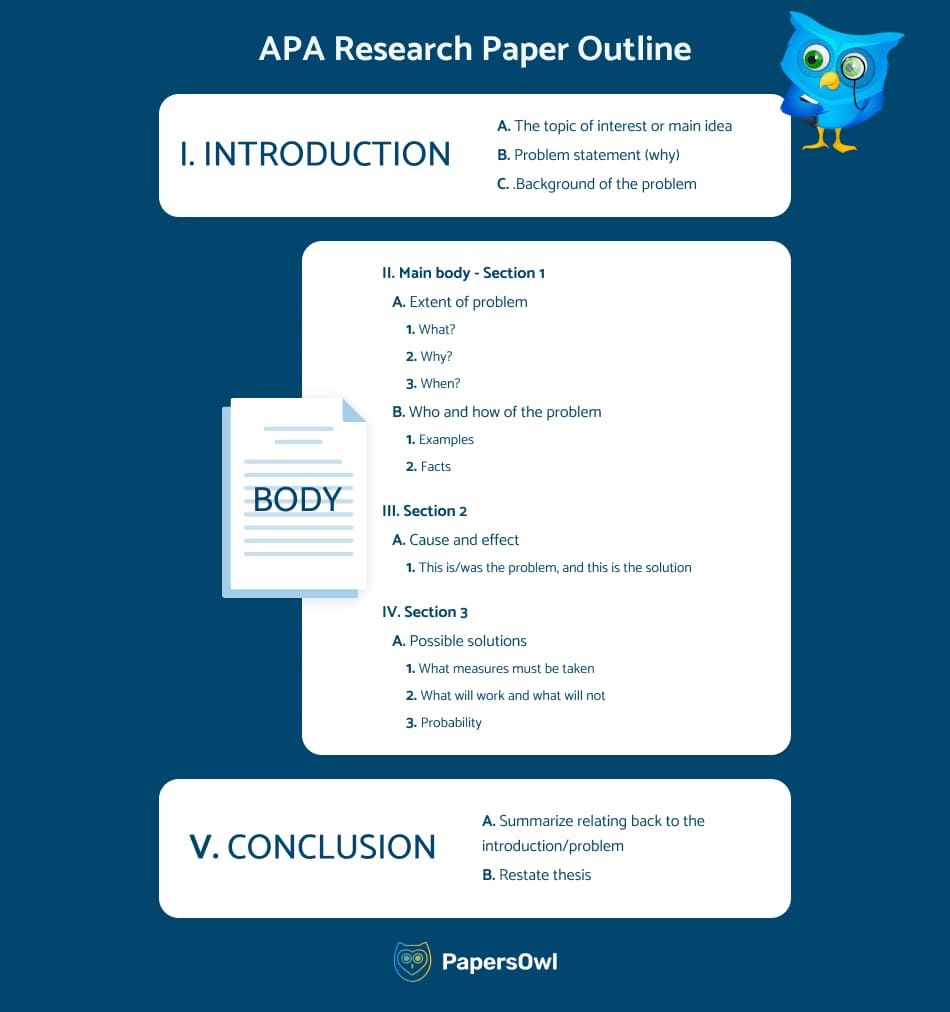
This research paper outline example will guide you in formatting the layout for a clear direction to work on. It eliminates the inconsistency along with lacking proper substance in the paper.
Understanding the APA Outline Format
It would not be wrong to say there is no standard outline format. The official publishing handbook does not give precise guidelines for preparing an outline. But, it requires certain basic guidelines to follow regarding typeface, font size, structure, margins, etc.
APA paper outline example
Moreover, the final shape of your work relies on your instructor’s specifications and your particular preferences for APA citation format. Though, it would be better to follow some standards for formatting your outline, for instance:
Times New Roman is a widely accessible standard typeface for an APA essay format in 12-point font. However, serif and sans serif fonts like Arial and Georgia are acceptable in font size 11pt.
The text of your paper format should be double-spaced.
The primary headlines use Roman and Arabic numerals to write an outline.
Headings & Subheadings
While writing an APA essay, there are particular standards for utilizing headings in your outline: I – Main headings are numbered by Roman numerals like I, II, III, IV A – Subheadings are numbered with Capital letters (A, B, C, D) 1 – The APA outline uses Arabic numerals (1-9 type numbers) within those subheadings. a – Below Arabic number subheadings, lower-case letters are used (a, b, a). [1] – Headings below those subheadings use Arabic numbers enclosed in parenthesis.
APA format offers a standard layout for each paper, such as
- 1-inch margins on the top, bottom, left, and right.
- The page number on the upper right corner.
The structure of writing an outline consists of three major sections:
- Introduction
Introduction:
This section highlights crucial background information.
Explain the primary points that support your ideas.
Conclusion:
- Summarize your key arguments.
- Explain how these concepts support your ultimate stance, as shown in APA outline example below.
An outline in APA has three common formats that vary in the numeric sequence of all. To make it easier for you, we have compiled all three templates. You can format your document using these examples for added coherence and structure.
The Basic APA Outline Format
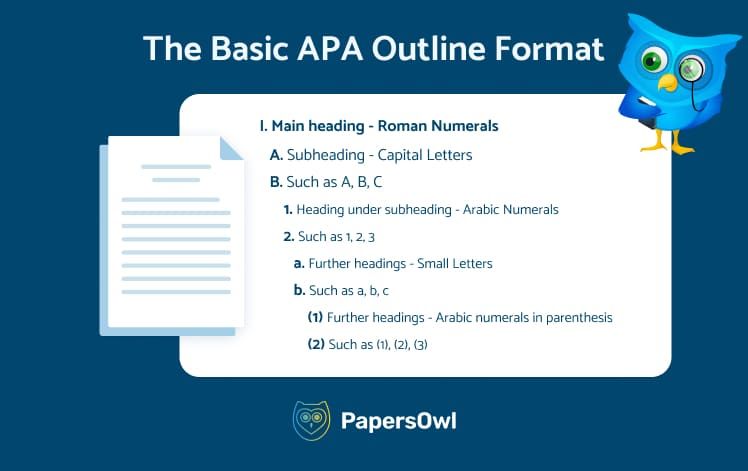
APA Style Outline Template Breakdown
Numbering the APA style format follows five levels of headings that use different alphabets and numbers. For instance, I – Headings use Roman numerals like I, II, and III. A – CAPITAL ALPHABETS”, such as A, B, C, etc. 1 – Headings and subheadings use Arabic numbers (1, 2, 3). a – If there are further headings (the fourth level), use lower-case alphabets. [1] – Headings below that (the fifth level) use Arabic numerals enclosed in parentheses, such as [1], [2], [3].
Full Sentence Outline Format
As the name specifies, the full-sentence style outline format requires every line to be a proper sentence. Full-sentence APA style outline is best recommended for essays and speeches. It gives your writing process an idea or a logical path to follow.
APA Research Paper Outline Example
If you are looking for how to write a research paper outline APA in Full Sentence Format, here is an example:
Full Sentence APA format heading utilizes Roman numerals I, II, and III. Every heading must be a full sentence. Here is an APA style paper outline template for the full-sentence format that will clear all your confusion on how to write an outline in full-sentence format.

APA Paper Outline Format Example
I. Introduction
III. Conclusion
Decimal Outline Format
The decimal outline format for APA research papers differs from other formats. The decimal APA style is simple and uses paragraphs for structure. It contains three main paragraphs, introduction, main body, and conclusion.
First Paragraph: Hook and Thesis
- The first paragraph is a sentence or two that introduces the central concept of your article.
- Introduce your topic or subject of study where your research is applicable as a context for further research.
- Explain why the mentioned issue is essential or relevant to the audience.
- A thesis statement is a claim that you make throughout your whole essay.
- The topic phrase is the first point in any writing to support a thesis statement.
- Give an explanation or provide evidence to support your point.
- Provide verifiable facts, figures, and/or citations from credible sources in your writing. It helps in the substantiating assertion.
- Include as many supporting statements and related evidence in your decimal outline.
Finally, when you write an outline, provide a concluding remark to support your claims.
Decimal APA outline format example
1.0 The main heading 1.1 Subheading under the main heading 1.2 Second digit is represented by subheadings under the main headings 1.2.1 Further division adds another digit in decimal format 1.2.2 You can number them as per the number of paragraphs or points, or lines An easy way to write in decimal APA outline format is to remember the structure, i.e.; 1.1.1 = Heading.Paragraph.Sentence/point under paragraph.”
Decimal APA outline format layout
1.0 Main heading 1.1 First paragraph for first heading. 1.2 Second paragraph for first heading. 1.2.1 First point or sentence for the second paragraph. 2.0 Second heading 2.1 Second heading, first paragraph. 2.2 Second heading, second paragraph. 2.2.1 Second, heading, second paragraph, first sentence, or point. 3.0 Decimal working 3.1 You must remember that each digit represents a segment. 3.2 It is easier to remember the placement of numbers. 3.2.1 First digit represents the heading 3.2.2 Second digit represents the paragraph under the main heading <3.2.3 The third digit represents any point or sentence under the paragraph.
Tips for Writing an Outline: Organize Your Ideas
You may feel it is easier to write without outlines, but once you start writing, organizing your ideas or thoughts becomes hard. Even if you have some fantastic ideas, producing an engaging story is practically hard. If you are not first creating an outline or conceptual guides while writing a research paper, you may lose track. A well-written outline is essential in completing your paper and maintaining quality. Establishing your point in paper writing is easy if you create an outline first. You can find an APA research paper outline template that best suits your requirement. Moreover, these tips can help you polish your writing. These tips and sample papers can help you write outstanding outlines without making any hassle.
A definite goal
For better expression, make a list of primary objectives on a title page in a single phrase or less. Your goal should be specific and measurable. If it is too broad or imprecise, you will not achieve anything. If you are working on a large paper format that covers a variety of themes or topics, you may have a more general purpose in mind. But, if you plan to write an essay, the aim should be as specific and clear as possible to be effective.
Breaking things up rather than allowing them to become verbose is known as the division rule. Make sure that each subsection in the document corresponds to its parent heading. If it doesn’t compare to the section, removing it or moving it to another location is better.
Parallelism
It is mainly related to the consistency and structure of the document. It keeps your paper’s layout tidy and also ensures relevancy. For instance, if you begin one heading with a verb, make sure all other headings and subheadings also start with a verb.
Coordination
Having headings aligned is critical to creating a well-organized outline. This rule also applies to subheadings, which is a good thing. If one title is less important than another, consider changing your layout by incorporating it into a subsection instead.
Subordination
Subordination deals with maintaining a connection between your paper’s headings and subheadings. It helps in the proper sequencing of headings and subheadings. Headings should be broad at the outset. At the same time, the subheadings become more particular as they go further into the document.
Avoid Redundancy
While writing a paper outline, look through it many times and cross out any items that aren’t necessary or have no significance. While outlining, make sure to be specific and concise. It will prevent you from adding information that does not supporting your final essay. Remove all the extra information and points while c that weighs you down while you write.
Wrap it up in a good way
Creating an outline does not only help in writing a coherent term paper, but it also helps in ending with precise understanding. Be considerate of your audience’s time and effort when you write an outline in APA, and ensure it serves its purpose. If you still have any doubts about formatting your paper outline, you can use this APA-style research paper outline template to write your document. We have provided Outline Format Example for every style.
People find it hard to write an outline in APA, but if you are aware of the requirements and structure, it’s no breeze. Sometimes, your instructor may alter your paper format by introducing or removing existing sections. As a result, if you come across any templates for an outline in APA, pay close attention to them. If you are looking for a quick answer to how to outline an APA paper, here’s a standard logical sequence of typical parts to include when writing an outline in APA:
- Thesis statement
- Techniques employed
- Body of paper
- Conclusions section
- List of references
A well-written outline is an excellent tool for presenting an outstanding paper. Including the key components while writing an outline for a research paper is necessary.
Readers also enjoyed

WHY WAIT? PLACE AN ORDER RIGHT NOW!
Just fill out the form, press the button, and have no worries!
We use cookies to give you the best experience possible. By continuing we’ll assume you board with our cookie policy.

A step-by-step guide for creating and formatting APA Style student papers
The start of the semester is the perfect time to learn how to create and format APA Style student papers. This article walks through the formatting steps needed to create an APA Style student paper, starting with a basic setup that applies to the entire paper (margins, font, line spacing, paragraph alignment and indentation, and page headers). It then covers formatting for the major sections of a student paper: the title page, the text, tables and figures, and the reference list. Finally, it concludes by describing how to organize student papers and ways to improve their quality and presentation.
The guidelines for student paper setup are described and shown using annotated diagrams in the Student Paper Setup Guide (PDF, 3.40MB) and the A Step-by-Step Guide to APA Style Student Papers webinar . Chapter 1 of the Concise Guide to APA Style and Chapter 2 of the Publication Manual of the American Psychological Association describe the elements, format, and organization for student papers. Tables and figures are covered in Chapter 7 of both books. Information on paper format and tables and figures and a full sample student paper are also available on the APA Style website.
Basic setup
The guidelines for basic setup apply to the entire paper. Perform these steps when you first open your document, and then you do not have to worry about them again while writing your paper. Because these are general aspects of paper formatting, they apply to all APA Style papers, student or professional. Students should always check with their assigning instructor or institution for specific guidelines for their papers, which may be different than or in addition to APA Style guidelines.
Seventh edition APA Style was designed with modern word-processing programs in mind. Most default settings in programs such as Academic Writer, Microsoft Word, and Google Docs already comply with APA Style. This means that, for most paper elements, you do not have to make any changes to the default settings of your word-processing program. However, you may need to make a few adjustments before you begin writing.
Use 1-in. margins on all sides of the page (top, bottom, left, and right). This is usually how papers are automatically set.
Use a legible font. The default font of your word-processing program is acceptable. Many sans serif and serif fonts can be used in APA Style, including 11-point Calibri, 11-point Arial, 12-point Times New Roman, and 11-point Georgia. You can also use other fonts described on the font page of the website.
Line spacing
Double-space the entire paper including the title page, block quotations, and the reference list. This is something you usually must set using the paragraph function of your word-processing program. But once you do, you will not have to change the spacing for the entirety of your paper–just double-space everything. Do not add blank lines before or after headings. Do not add extra spacing between paragraphs. For paper sections with different line spacing, see the line spacing page.
Paragraph alignment and indentation
Align all paragraphs of text in the body of your paper to the left margin. Leave the right margin ragged. Do not use full justification. Indent the first line of every paragraph of text 0.5-in. using the tab key or the paragraph-formatting function of your word-processing program. For paper sections with different alignment and indentation, see the paragraph alignment and indentation page.
Page numbers
Put a page number in the top right of every page header , including the title page, starting with page number 1. Use the automatic page-numbering function of your word-processing program to insert the page number in the top right corner; do not type the page numbers manually. The page number is the same font and font size as the text of your paper. Student papers do not require a running head on any page, unless specifically requested by the instructor.
Title page setup
Title page elements.
APA Style has two title page formats: student and professional (for details, see title page setup ). Unless instructed otherwise, students should use the student title page format and include the following elements, in the order listed, on the title page:
- Paper title.
- Name of each author (also known as the byline).
- Affiliation for each author.
- Course number and name.
- Instructor name.
- Assignment due date.
- Page number 1 in the top right corner of the page header.
The format for the byline depends on whether the paper has one author, two authors, or three or more authors.
- When the paper has one author, write the name on its own line (e.g., Jasmine C. Hernandez).
- When the paper has two authors, write the names on the same line and separate them with the word “and” (e.g., Upton J. Wang and Natalia Dominguez).
- When the paper has three or more authors, separate the names with commas and include “and” before the final author’s name (e.g., Malia Mohamed, Jaylen T. Brown, and Nia L. Ball).
Students have an academic affiliation, which identities where they studied when the paper was written. Because students working together on a paper are usually in the same class, they will have one shared affiliation. The affiliation consists of the name of the department and the name of the college or university, separated by a comma (e.g., Department of Psychology, George Mason University). The department is that of the course to which the paper is being submitted, which may be different than the department of the student’s major. Do not include the location unless it is part of the institution’s name.
Write the course number and name and the instructor name as shown on institutional materials (e.g., the syllabus). The course number and name are often separated by a colon (e.g., PST-4510: History and Systems Psychology). Write the assignment due date in the month, date, and year format used in your country (e.g., Sept. 10, 2020).
Title page line spacing
Double-space the whole title page. Place the paper title three or four lines down from the top of the page. Add an extra double-spaced blank like between the paper title and the byline. Then, list the other title page elements on separate lines, without extra lines in between.
Title page alignment
Center all title page elements (except the right-aligned page number in the header).
Title page font
Write the title page using the same font and font size as the rest of your paper. Bold the paper title. Use standard font (i.e., no bold, no italics) for all other title page elements.
Text elements
Repeat the paper title at the top of the first page of text. Begin the paper with an introduction to provide background on the topic, cite related studies, and contextualize the paper. Use descriptive headings to identify other sections as needed (e.g., Method, Results, Discussion for quantitative research papers). Sections and headings vary depending on the paper type and its complexity. Text can include tables and figures, block quotations, headings, and footnotes.
Text line spacing
Double-space all text, including headings and section labels, paragraphs of text, and block quotations.
Text alignment
Center the paper title on the first line of the text. Indent the first line of all paragraphs 0.5-in.
Left-align the text. Leave the right margin ragged.
Block quotation alignment
Indent the whole block quotation 0.5-in. from the left margin. Double-space the block quotation, the same as other body text. Find more information on the quotations page.
Use the same font throughout the entire paper. Write body text in standard (nonbold, nonitalic) font. Bold only headings and section labels. Use italics sparingly, for instance, to highlight a key term on first use (for more information, see the italics page).
Headings format
For detailed guidance on formatting headings, including headings in the introduction of a paper, see the headings page and the headings in sample papers .
- Alignment: Center Level 1 headings. Left-align Level 2 and Level 3 headings. Indent Level 4 and Level 5 headings like a regular paragraph.
- Font: Boldface all headings. Also italicize Level 3 and Level 5 headings. Create heading styles using your word-processing program (built into AcademicWriter, available for Word via the sample papers on the APA Style website).
Tables and figures setup
Tables and figures are only included in student papers if needed for the assignment. Tables and figures share the same elements and layout. See the website for sample tables and sample figures .
Table elements
Tables include the following four elements:
- Body (rows and columns)
- Note (optional if needed to explain elements in the table)
Figure elements
Figures include the following four elements:
- Image (chart, graph, etc.)
- Note (optional if needed to explain elements in the figure)
Table line spacing
Double-space the table number and title. Single-, 1.5-, or double-space the table body (adjust as needed for readability). Double-space the table note.
Figure line spacing
Double-space the figure number and title. The default settings for spacing in figure images is usually acceptable (but adjust the spacing as needed for readability). Double-space the figure note.
Table alignment
Left-align the table number and title. Center column headings. Left-align the table itself and left-align the leftmost (stub) column. Center data in the table body if it is short or left-align the data if it is long. Left-align the table note.
Figure alignment
Left-align the figure number and title. Left-align the whole figure image. The default alignment of the program in which you created your figure is usually acceptable for axis titles and data labels. Left-align the figure note.
Bold the table number. Italicize the table title. Use the same font and font size in the table body as the text of your paper. Italicize the word “Note” at the start of the table note. Write the note in the same font and font size as the text of your paper.
Figure font
Bold the figure number. Italicize the figure title. Use a sans serif font (e.g., Calibri, Arial) in the figure image in a size between 8 to 14 points. Italicize the word “Note” at the start of the figure note. Write the note in the same font and font size as the text of your paper.
Placement of tables and figures
There are two options for the placement of tables and figures in an APA Style paper. The first option is to place all tables and figures on separate pages after the reference list. The second option is to embed each table and figure within the text after its first callout. This guide describes options for the placement of tables and figures embedded in the text. If your instructor requires tables and figures to be placed at the end of the paper, see the table and figure guidelines and the sample professional paper .
Call out (mention) the table or figure in the text before embedding it (e.g., write “see Figure 1” or “Table 1 presents”). You can place the table or figure after the callout either at the bottom of the page, at the top of the next page, or by itself on the next page. Avoid placing tables and figures in the middle of the page.
Embedding at the bottom of the page
Include a callout to the table or figure in the text before that table or figure. Add a blank double-spaced line between the text and the table or figure at the bottom of the page.
Embedding at the top of the page
Include a callout to the table in the text on the previous page before that table or figure. The table or figure then appears at the top of the next page. Add a blank double-spaced line between the end of the table or figure and the text that follows.
Embedding on its own page
Embed long tables or large figures on their own page if needed. The text continues on the next page.
Reference list setup
Reference list elements.
The reference list consists of the “References” section label and the alphabetical list of references. View reference examples on the APA Style website. Consult Chapter 10 in both the Concise Guide and Publication Manual for even more examples.
Reference list line spacing
Start the reference list at the top of a new page after the text. Double-space the entire reference list (both within and between entries).
Reference list alignment
Center the “References” label. Apply a hanging indent of 0.5-in. to all reference list entries. Create the hanging indent using your word-processing program; do not manually hit the enter and tab keys.
Reference list font
Bold the “References” label at the top of the first page of references. Use italics within reference list entries on either the title (e.g., webpages, books, reports) or on the source (e.g., journal articles, edited book chapters).
Final checks
Check page order.
- Start each section on a new page.
- Arrange pages in the following order:
- Title page (page 1).
- Text (starts on page 2).
- Reference list (starts on a new page after the text).
Check headings
- Check that headings accurately reflect the content in each section.
- Start each main section with a Level 1 heading.
- Use Level 2 headings for subsections of the introduction.
- Use the same level of heading for sections of equal importance.
- Avoid having only one subsection within a section (have two or more, or none).
Check assignment instructions
- Remember that instructors’ guidelines supersede APA Style.
- Students should check their assignment guidelines or rubric for specific content to include in their papers and to make sure they are meeting assignment requirements.
Tips for better writing
- Ask for feedback on your paper from a classmate, writing center tutor, or instructor.
- Budget time to implement suggestions.
- Use spell-check and grammar-check to identify potential errors, and then manually check those flagged.
- Proofread the paper by reading it slowly and carefully aloud to yourself.
- Consult your university writing center if you need extra help.
About the author

Undergraduate student resources

Writing Center Outlines: Outlines
In this section, you'll find resources on creating Outlines. Because outlines are not published works, they do not ordinarily require APA formatting. However, assignment instructions can include APA as a grading criteria for your work, and in those instances, you should use APA standards for formatting (Title page) and use of sources (References).
Creating an Outline
An outline is a drafting tool to help you plan your paper. An outline provides structure for the sections and/or paragraphs of your paper, depending on the scope of your project. Please note that APA style does not require any specific formatting for outlines because APA style is intended for published texts and academic essays.
An outline should illustrate the progression of your thesis statement. Since each paragraph should have a main idea supported by evidence, you can use support from your research to outline your paper, paragraph by paragraph
- A thesis statement is a short statement that introduces the argument of your paper as a whole.
- Every paragraph in your paper should begin with a claim/main idea , which will be a debatable assertion or position that requires support. Claims build off one another in order to develop an argument over the course of an essay.
- Every claim should be supported by evidence or support , the proof that validates your claim. Evidence and support usually come from other sources, like peer-reviewed journal articles. This can include facts, data, statistics, anecdotes, and more.
Keep the following tips in mind when creating an outline:
- Remember, outlines should be helpful for you when writing your paper. You should be able to look at your outline and write major sections or paragraphs using the information and ideas in your outline.
- Level 1 bullet points should outline the major topics and ideas of your paper.
- Level 2 bullet points should plan out sub-topics, supporting ideas, and organizational aspects of your essay.
- Level 3 bullet points illustrate an extra level of thought and detail in your outline that you might not need. However, if you have done a lot of research on your topic already, you can use Level 3 bullet points to plan out your analysis for each piece of evidence or where to address specific counterarguments.
- It is not always required, but it can be a good idea to include a references page after your outline. This way, your sources are already organized when you begin drafting your essay.
Full sentence outlines are often accompanied with an APA reference list on a separate page. Quotes within the outline must also utilize APA in-text citations.
Sample Alphanumeric Outline
This downloadable sample alphanumeric outline will help you understand what a completed outline could look like.
Alphanumeric Outline Template
You can use this downloadable alphanumeric outline template to help get you started with your assignment.
Sample Outline
This downloadable sample outline will help you understand what a completed outline could look like.
Outline Template
You can use this downloadable outline template to help you get started with your assignment.
- Last Updated: Feb 15, 2024 11:01 AM
- URL: https://csuglobal.libguides.com/outlines
- Bipolar Disorder
- Therapy Center
- When To See a Therapist
- Types of Therapy
- Best Online Therapy
- Best Couples Therapy
- Best Family Therapy
- Managing Stress
- Sleep and Dreaming
- Understanding Emotions
- Self-Improvement
- Healthy Relationships
- Student Resources
- Personality Types
- Guided Meditations
- Verywell Mind Insights
- 2024 Verywell Mind 25
- Mental Health in the Classroom
- Editorial Process
- Meet Our Review Board
- Crisis Support
How to Write an Essay in APA Format
Kendra Cherry, MS, is a psychosocial rehabilitation specialist, psychology educator, and author of the "Everything Psychology Book."
:max_bytes(150000):strip_icc():format(webp)/IMG_9791-89504ab694d54b66bbd72cb84ffb860e.jpg)
Emily is a board-certified science editor who has worked with top digital publishing brands like Voices for Biodiversity, Study.com, GoodTherapy, Vox, and Verywell.
:max_bytes(150000):strip_icc():format(webp)/Emily-Swaim-1000-0f3197de18f74329aeffb690a177160c.jpg)
What Is APA Format?
Apa essay format basics.
- Steps to Follow
Frequently Asked Questions
If your instructor has asked you to write an APA format essay, it might at first seem like a daunting task, especially if you are accustomed to using another style such as MLA or Chicago. But you can master the rules of APA essay format, too.
An essay is one type of paper that can be written in APA format; others include lab reports, experimental reports, and case studies. Before you begin, familiarize yourself with some of the basic guidelines for writing a paper in APA format. Of course, it will also be important to follow any other formatting instructions that are part of your assignment.
How do you write an essay in APA format? The basic elements you need to include are:
- A title page
- An abstract
- An introduction, main body, and conclusion
- A reference section
- Proper APA formatting with regard to margins, layout, spacing, titles, and indentations
This article discusses how to write an essay in APA format, including the basic steps you should follow and tips for how to get started.
Whether you’re taking an introductory or graduate-level psychology class, chances are strong that you will have to write at least one paper during the course of the semester. In almost every case, you will need to write your paper in APA format, the official publication style of the American Psychological Association . It is also used for academic journals.
Such rules are generally the same whether you are writing a high school essay, college essay, or professional essay for publication.
APA format is used in a range of disciplines including psychology , education, and other social sciences. The format dictates presentation elements of your paper including spacing, margins, and how the content is structured.
Most instructors and publication editors have strict guidelines when it comes to how your format your writing. Not only does adhering to APA format allow readers to know what to expect from your paper, but it also means that your work will not lose critical points over minor formatting errors.
While the formatting requirements for your paper might vary depending on your instructor's directions, writing APA essay format means you will most likely need to include a title page, abstract, introduction, body, conclusion, and reference sections.
Your APA format essay should have a title page . This title page should include the title of your paper, your name, and your school affiliation. In some instances, your teacher might require additional information such as the course title, instructor name, and the date.
- The title of your paper should be concise and clearly describe what your paper is about.
- Your title can extend to two lines, but it should be no longer than 12 words.
An abstract is a brief summary of your paper that immediately follows the title page. It is not required for student papers, according to APA style. However, your instructor may request one.
If you include an abstract , it should be no more than 100 to 200 words, although this may vary depending upon the instructor requirements.
Your essay should also include a reference list with all of the sources that were cited in your essay,
- The reference section is located at the end of your paper.
- References should be listed alphabetically by the last name of the author.
- References should be double-spaced.
- Any source that is cited in your paper should be included in your reference section.
When writing in APA essay format, the text will include the actual essay itself: The introduction, body, and conclusion.
- There should be uniform margins of at least one inch at the top, bottom, left, and right sides of your essay.
- The text should be in Times New Roman size 12 font or another serif typeface that is easily readable.
- Your paper should be double-spaced.
- Every page should include a page number in the top right corner.
- The first word of each paragraph in your paper should be indented one-half inch.
For professional papers (usually not student papers), every page of the essay also includes a running head at the top left. The running head is a shortened form of the title, often the first few words, and should be no more than 50 characters (including spaces).
Steps to a Successful APA Format Essay
In addition to ensuring that you cite your sources properly and present information according to the rules of APA style, there are a number of things you can do to make the writing process a little bit easier.
Choose a Topic
Start by choosing a good topic to write about. Ideally, you want to select a subject that is specific enough to let you fully research and explore the topic, but not so specific that you have a hard time finding sources of information.
If you choose something too specific, you may find yourself with not enough to write about. If you choose something too general, you might find yourself overwhelmed with information.
Research Your Topic
Start doing research as early as possible. Begin by looking at some basic books and articles on your topic to help develop it further. What is the question you are going to answer with your essay? What approach will you take to the topic?
Once you are more familiar with the subject, create a preliminary source list of potential books, articles, essays, and studies that you may end up using in your essay.
Remember, any source used in your essay must be included in your reference section. Conversely, any source listed in your references must be cited somewhere in the body of your paper.
Write Your Rough Draft
With research in hand, you are ready to begin. Some people like to create an outline to organize their argument prior to drafting. You may want to start with a very rough outline, and then add details.
Once you have a detailed outline, the next step is to translate it from notes to complete sentences and paragraphs. Remember, this is a first draft. It doesn't have to be perfect.
As you write your paper in APA essay format, be sure to keep careful track of the sources that you cite.
How do you start an APA paper? Your paper should begin with an introduction that includes a thesis statement that presents your main ideas, points, or arguments. Your introduction should start on the third page of your paper (after the title page and abstract). The title of your paper should be centered, bolded, and typed in title case at the top of the page.
Review and Revise
After you have prepared a rough draft of your essay, it's time to revise, review, and prepare your final draft. In addition to making sure that your writing is cohesive and supported by your sources, you should also check carefully for typos, grammar errors, and possible formatting mistakes.
When citing information or quotations taken from an interview, APA format requires that you cite the source, how the information was collected, and the date of the interview. They should not be included in the reference section, however, because they are not something that can be located by a reader in any published source or searchable database.
Instead, the information should be cited parenthetically in the main body of the text. For example: “There was an increase in the number of college students who screened positive for depression/anxiety” (R. Heathfield, personal communication, May 9, 2021).
If the essay is in a chapter of a book, edited collection, or anthology, APA format states that you should cite the last name, first name, title of essay, title of collection, publisher, year, and page range. For example: Smith, John, "The Light House," A Book of Poems , editing by Peter Roberts, Allworth Press, 2005, pp. 20-25.
According to APA format, a two-part essay is formatted the same as an essay, however, you'll need to create two title pages.
If you're including a short direct quote in your APA-format essay, you will need to cite the author, year of publication, and page number (p.) or page number span (pp.). Quotations longer than 40 words should omit the quotation marks and be put in the text using block quotation formatting, on its own line and indented 1/2 inch from the left margin.
The cover page or "title page" in APA essay format should always include the title of your paper, your name, and school affiliation as well as the course title, instructor name, and date, if requested by your teacher.
Nagda S. How to write a scientific abstract. J Indian Prosthodont Soc. 2013;13(3):382-383. doi:10.1007/s13191-013-0299-x
American Psychological Association. Publication Manual of the American Psychological Association (7th ed.). Washington DC: The American Psychological Association; 2019.
By Kendra Cherry, MSEd Kendra Cherry, MS, is a psychosocial rehabilitation specialist, psychology educator, and author of the "Everything Psychology Book."

APA Formatting and Style (7th ed.) for Student Papers
- What's New in the 7th ed.?
- Principles of Plagiarism: An Overview
- Basic Paper Formatting
- Basic Paper Elements
- Punctuation, Capitalization, Abbreviations, Apostrophes, Numbers, Plurals
- Tables and Figures
- Powerpoint Presentations
- Reference Page Format
- Periodicals (Journals, Magazines, Newspapers)
- Books and Reference Works
- Webpage on a Website
- Discussion Post
- Company Information & SWOT Analyses
- Dissertations or Theses
- ChatGPT and other AI Large Language Models
- Online Images
- Online Video
- Computer Software and Mobile Apps
- Missing Information
- Two Authors
- Three or More Authors
- Group Authors
- Missing Author
- Chat GPT and other AI Large Language Models
- Secondary Sources
- Block Quotations
- Fillable Template and Sample Paper
- Government Documents and Legal Materials
- APA Style 7th ed. Tutorials
- Additional APA 7th Resources
- Grammarly - your writing assistant
- Writing Center - Writing Skills This link opens in a new window
- Brainfuse Online Tutoring
APA 7th ed. Fillable Word Template and Sample Paper
- APA 7th ed. Template Download this Word document, fill out the title page and get writing!
- Sample Paper APA 7th ed. Our APA sample paper shows you how to format the main parts of a basic research paper.
- APA 7th Sample Papers from Purdue Owl
- << Previous: Block Quotations
- Next: Government Documents and Legal Materials >>
- Last Updated: May 3, 2024 2:22 PM
- URL: https://national.libguides.com/apa_7th

Write With Clarity, Precision, and Inclusion
APA Style is used by writers in many disciplines around the world for concise, powerful, and persuasive scholarly communication.
About APA style 7th Edition now available


Inclusive Language Guide

Access the Guide
Available now! The Mastering APA Style Student Workbook
The Mastering APA Style Student Workbook is an online and interactive workbook for teaching and learning seventh edition APA Style. Explore the workbook to learn more, register for a webinar, watch a demo video, try a sample workbook, and purchase your copy. Adopt the workbook for your course or workshop to use it to teach APA Style and scholarly writing.
Explore the workbook Free instructor trial
Popular Style Guidelines
Apa style monthly.
Subscribe to our free monthly newsletter to get APA Style tips, updates, and resources delivered directly to your inbox. Subscribe
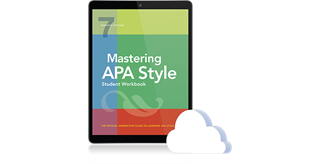
Mastering APA Style Student Workbook
An online and interactive workbook designed for teaching and learning seventh edition APA Style

Concise Guide, Seventh Edition
An easy-to-use guide for students writing their papers in seventh edition APA Style
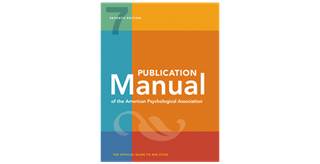
Publication Manual, Seventh Edition
The official source for seventh edition APA Style that guides users through the scholarly writing process

Academic Writer™
Subscribe to Academic Writer, APA’s tool for teaching and learning effective writing
Educators and Students
Course Adoption
Handouts and Guides
Tutorials and Webinars
Journal Article Reporting Standards

Learn More About JARS
APA 7th Edition: Download/Edit APA Paper Template
- Download/Edit APA Paper Template
- Abstract Page
- APA Paper Section Headings
- Cite a YouTube Video or Website
- Missing Information from Source
- Reference Page
- Sample APA Paper
- APA Step by Step Guide
- APA Format Checklist
- Citation Generators
Monroe College & APA Style
Monroe college uses apa 7 style guidelines for all student papers. , you can download our detailed apa 7 formatting tutorial here ., if your instructor's directions conflict with any apa rules, follow the instructor's directions., apa 7th edition template.
- APA 7 Student Paper Template (.docx) Download this 7th-edition template, and use it to format your APA-style Research Paper. Simply download and save a new copy of the document and paste the contents of your paper into the appropriate fields within the template.
- APA 7 Paper Template WITH ABSTRACT This version of the template includes the ABSTRACT page. Ask your instructor whether the Abstract is required for your paper.
- APA 7 Student Paper Template PDF
A Monroe College Research Guide
THIS RESEARCH OR "LIBGUIDE" WAS PRODUCED BY THE LIBRARIANS OF MONROE COLLEGE
- Next: Title Page >>
- Last Updated: Jun 25, 2024 3:55 PM
- URL: https://monroecollege.libguides.com/apa
- Research Guides |
- Databases |

Stay in touch
BeeStudent.com provides professional, original and high-quality assignment writing services that are aimed at helping students with their research and writing needs.

- MJC Library & Learning Center
- Research Guides
Format Your Paper & Cite Your Sources
- APA Style, 7th Edition
- Citing Sources
- Avoid Plagiarism
- MLA Style (8th/9th ed.)
APA Tutorial
Formatting your paper, headings organize your paper (2.27), video tutorials, reference list format (9.43).
- Elements of a Reference
Reference Examples (Chapter 10)
Dois and urls (9.34-9.36), in-text citations.
- In-Text Citations Format
- In-Text Citations for Specific Source Types
NoodleTools
- Chicago Style
- Harvard Style
- Other Styles
- Annotated Bibliographies
- How to Create an Attribution
What is APA Style?
APA style was created by social and behavioral scientists to standardize scientific writing. APA style is most often used in:
- psychology,
- social sciences (sociology, business), and
If you're taking courses in any of these areas, be prepared to use APA style.
For in-depth guidance on using this citation style, refer to Publication Manual of the American Psychological Association , 7th ed. We have several copies available at the MJC Library at the call number BF 76.7 .P83 2020 .
APA Style, 7th ed.
In October 2019, the American Psychological Association made radical changes its style, especially with regard to the format and citation rules for students writing academic papers. Use this guide to learn how to format and cite your papers using APA Style, 7th edition.
You can start by viewing the video tutorial .
For help on all aspects of formatting your paper in APA Style, see The Essentials page on the APA Style website.
- sans serif fonts such as 11-point Calibri, 11-point Arial, or 10-point Lucida Sans Unicode, or
- serif fonts such as 12-point Times New Roman, 11-point Georgia, or normal (10-point) Computer Modern (the default font for LaTeX)
- There are exceptions for the title page , tables , figures , footnotes , and displayed equations .
- Margins : Use 1-in. margins on every side of the page.
- Align the text of an APA Style paper to the left margin . Leave the right margin uneven, or “ragged.”
- Do not use full justification for student papers.
- Do not insert hyphens (manual breaks) in words at the end of line. However, it is acceptable if your word-processing program automatically inserts breaks in long hyperlinks (such as in a DOI or URL in a reference list entry).
- Indent the first line of each paragraph of text 0.5 in . from the left margin. Use the tab key or the automatic paragraph-formatting function of your word-processing program to achieve the indentation (the default setting is likely already 0.5 in.). Do not use the space bar to create indentation.
- There are exceptions for the title page , section labels , abstract , block quotations , headings , tables and figures , reference list , and appendices .
Paper Elements
Student papers generally include, at a minimum:
- Title Page (2.3)
- Text (2.11)
- References (2.12)
Student papers may include additional elements such as tables and figures depending on the assignment. So, please check with your teacher!
Student papers generally DO NOT include the following unless your teacher specifically requests it:
- Running head
- Author note
For complete information on the order of pages , see the APA Style website.
Number your pages consecutively starting with page 1. Each section begins on a new page. Put the pages in the following order:
- Page 1: Title page
- Page 2: Abstract (if your teacher requires an abstract)
- Page 3: Text
- References begin on a new page after the last page of text
- Footnotes begin on a new page after the references (if your teacher requires footnotes)
- Tables begin each on a new page after the footnotes (if your teacher requires tables)
- Figures begin on a new page after the tables (if your teacher requires figures)
- Appendices begin on a new page after the tables and/or figures (if your teacher requires appendices)
Sample Papers With Built-In Instructions
To see what your paper should look like, check out these sample papers with built-in instructions.
APA Style uses five (5) levels of headings to help you organize your paper and allow your audience to identify its key points easily. Levels of headings establish the hierarchy of your sections just like you did in your paper outline.
APA tells us to use "only the number of headings necessary to differentiate distinct section in your paper." Therefore, the number of heading levels you create depends on the length and complexity of your paper.
See the chart below for instructions on formatting your headings:

Use Word to Format Your Paper:
Use Google Docs to Format Your Paper:
Placement: The reference list appears at the end of the paper, on its own page(s). If your research paper ends on page 8, your References begin on page 9.
Heading: Place the section label References in bold at the top of the page, centered.
Arrangement: Alphabetize entries by author's last name. If source has no named author, alphabetize by the title, ignoring A, An, or The. (9.44-9.48)
Spacing: Like the rest of the APA paper, the reference list is double-spaced throughout. Be sure NOT to add extra spaces between citations.
Indentation: To make citations easier to scan, add a hanging indent of 0.5 in. to any citation that runs more than one line. Use the paragraph-formatting function of your word processing program to create your hanging indent.
See Sample References Page (from APA Sample Student Paper):

Elements of Reference List Entries: (Chapter 9)

References generally have four elements, each of which has a corresponding question for you to answer:
- Author: Who is responsible for this work? (9.7-9.12)
- Date: When was this work published? (9.13-9.17)
- Title: What is this work called? (9.18-9.22)
- Source: Where can I retrieve this work? (9.23-9.37)
By using these four elements and answering these four questions, you should be able to create a citation for any type of source.
For complete information on all of these elements, checkout the APA Style website.
This infographic shows the first page of a journal article. The locations of the reference elements are highlighted with different colors and callouts, and the same colors are used in the reference list entry to show how the entry corresponds to the source.
To create your references, you'll simple look for these elements in your source and put them together in your reference list entry.
American Psychological Association. Example of where to find reference information for a journal article [Infographic]. APA Style Center. https://apastyle.apa.org/style-grammar-guidelines/references/basic-principles
Below you'll find two printable handouts showing APA citation examples. The first is an abbreviated list created by MJC Librarians. The second, which is more comprehensive, is from the APA Style website. Feel free to print these for your convenience or use the links to reference examples below:
- APA Citation Examples Created by MJC Librarians for you.
- Common References Examples (APA Handout) Printable handout from the American Psychological Association.
- Journal Article
- Magazine Article
- Newspaper Article
- Edited Book Chapter
- Webpage on a Website
Classroom or Intranet Sources
- Classroom Course Pack Materials
- How to Cite ChatGPT
- Dictionary Entry
- Government Report
- Legal References (Laws & Cases)
- TED Talk References
- Religious Works
- Open Educational Resources (OER)
- Archival Documents and Collections
You can view the entire Reference Examples website below and view a helpful guide to finding useful APA style topics easily:
- APA Style: Reference Examples
- Navigating the not-so-hidden treasures of the APA Style website
- Missing Reference Information
Sometimes you won't be able to find all the elements required for your reference. In that case, see the instructions in Table 9.1 of the APA style manual in section 9.4 or the APA Style website below:
- Direct Quotation of Material Without Page Numbers
The DOI or URL is the final component of a reference list entry. Because so much scholarship is available and/or retrieved online, most reference list entries end with either a DOI or a URL.
- A DOI is a unique alphanumeric string that identifies content and provides a persistent link to its location on the internet. DOIs can be found in database records and the reference lists of published works.
- A URL specifies the location of digital information on the internet and can be found in the address bar of your internet browser. URLs in references should link directly to the cited work when possible.
When to Include DOIs and URLs:
- Include a DOI for all works that have a DOI, regardless of whether you used the online version or the print version.
- If an online work has both a DOI and a URL, include only the DOI.
- For works without DOIs from websites (not including academic research databases), provide a URL in the reference (as long as the URL will work for readers).
- For works without DOIs from most academic research databases, do not include a URL or database information in the reference because these works are widely available. The reference should be the same as the reference for a print version of the work.
- For works from databases that publish original, proprietary material available only in that database (such as the UpToDate database) or for works of limited circulation in databases (such as monographs in the ERIC database), include the name of the database or archive and the URL of the work. If the URL requires a login or is session-specific (meaning it will not resolve for readers), provide the URL of the database or archive home page or login page instead of the URL for the work. (See APA Section 9.30 for more information).
- If the URL is no longer working or no longer provides readers access to the content you intend to cite, try to find an archived version using the Internet Archive , then use the archived URL. If there is no archived URL, do not use that resource.
Format of DOIs and URLs:
Your DOI should look like this:
https://doi.org/10.1037/a0040251
Follow these guidelines from the APA Style website.
APA Style uses the author–date citation system , in which a brief in-text citation points your reader to the full reference list entry at the end of your paper. The in-text citation appears within the body of the paper and briefly identifies the cited work by its author and date of publication. This method enables your reader to locate the corresponding entry in the alphabetical reference list at the end of your paper.
Each work you cite must appear in the reference list, and each work in the reference list must be cited in the text (or in a table, figure, footnote, or appendix) except for the following (See APA, 8.4):
- Personal communications (8.9)
- General mentions of entire websites, whole periodicals (8.22), and common software and apps (10.10) in the text do not require a citation or reference list entry.
- The source of an epigraph does not usually appear in the reference list (8.35)
- Quotations from your research participants do not need citations or reference list entries (8.36)
- References included in a statistical meta-analysis, which are marked with an asterisk in the reference list, may be cited in the text (or not) at the author’s discretion. This exception is relevant only to authors who are conducting a meta-analysis (9.52).
Formatting Your In-Text Citations
Parenthetical and Narrative Citations: ( See APA Section 8.11)
In APA style you use the author-date citation system for citing references within your paper. You incorporate these references using either a parenthetical or a narrative style.
Parenthetical Citations
- In parenthetical citations, the author name and publication date appear in parentheses, separated by a comma. (Jones, 2018)
- A parenthetical citation can appear within or at the end of a sentence.
- When the parenthetical citation is at the end of the sentence, put the period or other end punctuation after the closing parenthesis.
- If there is no author, use the first few words of the reference list entry, usually the "Title" of the source: ("Autism," 2008) See APA 8.14
- When quoting, always provide the author, year, and specific page citation or paragraph number for nonpaginated materials in the text (Santa Barbara, 2010, p. 243). See APA 8.13
- For most citations, the parenthetical reference is placed BEFORE the punctuation: Magnesium can be effective in treating PMS (Haggerty, 2012).
Narrative Citations
In narrative citations, the author name or title of your source appears within your text and the publication date appears in parentheses immediately after the author name.
- Santa Barbara (2010) noted a decline in the approval of disciplinary spanking of 26 percentage points from 1968 to 1994.
In-Text Citation Checklist
- In-Text Citation Checklist Use this useful checklist from the American Psychological Association to ensure that you've created your in-text citations correctly.
In-Text Citations for Specific Types of Sources
Quotations from Research Participants
Personal Communications
Secondary Sources
Use NoodleTools to Cite Your Sources
NoodleTools can help you create your references and your in-text citations.
- NoodleTools Express No sign in required . When you need one or two quick citations in MLA, APA, or Chicago style, simply generate them in NoodleTools Express then copy and paste what you need into your document. Note: Citations are not saved and cannot be exported to a word processor using NoodleTools Express.
- NoodleTools (Login Full Database) This link opens in a new window Create and organize your research notes, share and collaborate on research projects, compose and error check citations, and complete your list of works cited in MLA, APA, or Chicago style using the full version of NoodleTools. You'll need to Create a Personal ID and password the first time you use NoodleTools.
See How to Use NoodleTools Express to Create a Citation in APA Format
Additional NoodleTools Help
- NoodleTools Help Desk Look up questions and answers on the NoodleTools Web site
- << Previous: MLA Style (8th/9th ed.)
- Next: Chicago Style >>
- Last Updated: Jul 10, 2024 5:03 PM
- URL: https://libguides.mjc.edu/citeyoursources
Except where otherwise noted, this work is licensed under CC BY-SA 4.0 and CC BY-NC 4.0 Licenses .
Generate accurate APA citations for free
- Knowledge Base
- APA Style 6th edition
- APA format for academic papers (6th edition)
APA Format (6th ed.) for Academic Papers and Essays [Template]
Published on November 6, 2020 by Raimo Streefkerk . Revised on September 4, 2023.
In addition to guidelines for APA citations , there are format guidelines for academic papers and essays. They’re widely used by professionals, researchers and students.
Generate accurate APA citations with Scribbr
The most important APA format guidelines in the 6th edition are:
- Use 12 pt Times New Roman
- Set 1 inch page margins
- Apply double line spacing
- Insert a running head on every page
- Indent every new paragraph ½ inch
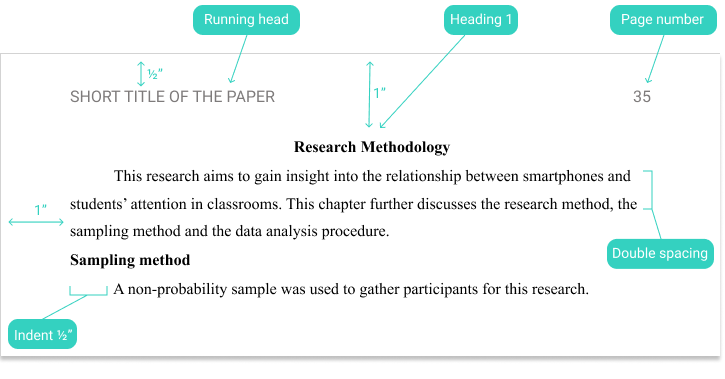
Table of contents
Apa format template, running head, reference page, in-text citations and references, setting up the apa format.
Instead of applying the APA guidelines to your document you can simply download the APA format template for Word.
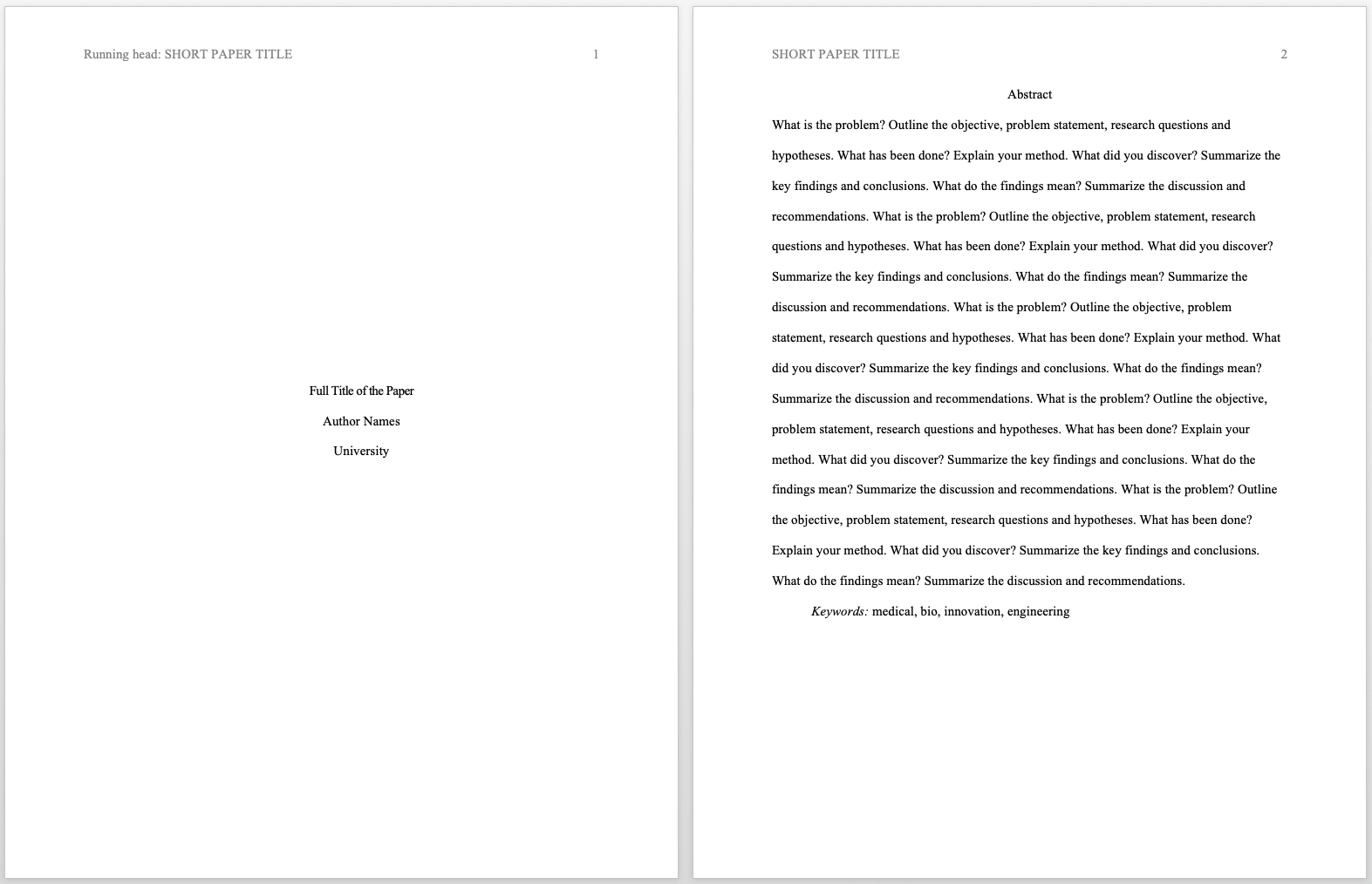
Download APA Format Template (.docx)
Are your APA in-text citations flawless?
The AI-powered APA Citation Checker points out every error, tells you exactly what’s wrong, and explains how to fix it. Say goodbye to losing marks on your assignment!
Get started!

In the header of each page you include the paper title and page number. If your paper title is longer than 50 characters you should use a shortened version as running head. The page number should be positioned in the top right-hand corner. On the title page the APA running head is preceded by the words “Running head:”.

Throughout your paper you use different heading levels. The levels ranging from one to five help structure the document. Major headings, or heading 1, are used for the titles of chapters such as “Methods” or “Results”. Heading levels two to five are used for subheadings. Each heading level is formatted differently. These are the APA heading guidelines :
| Heading level | APA format |
|---|---|
| Heading 1 | |
| Heading 2 | |
| Heading 3 | The body text begins immediately after the period. |
| Heading 4 | The body text begins immediately after the period. |
| Heading 5 | The body text begins immediately after the point. |
Title case capitalization : Capitalize the first, last, and principal words. Sentence case capitalization : Capitalize only the first word and any proper nouns.
Note that you are not required to include a table of contents in APA style , but if you do choose to include one, all headings should be formatted as plain text, with an additional indent for each level.
The APA title page , also called cover page, is the first page of your paper. The regular formatting guidelines regarding font and margins apply. In addition, an APA formatted title page contains:
- Running head including page number
- Full paper title (in title case)
- Author name(s), without titles and degrees
- Institutional affiliation
Note: APA style has specific guidelines for including more than one author or institutional affiliation on the title page .
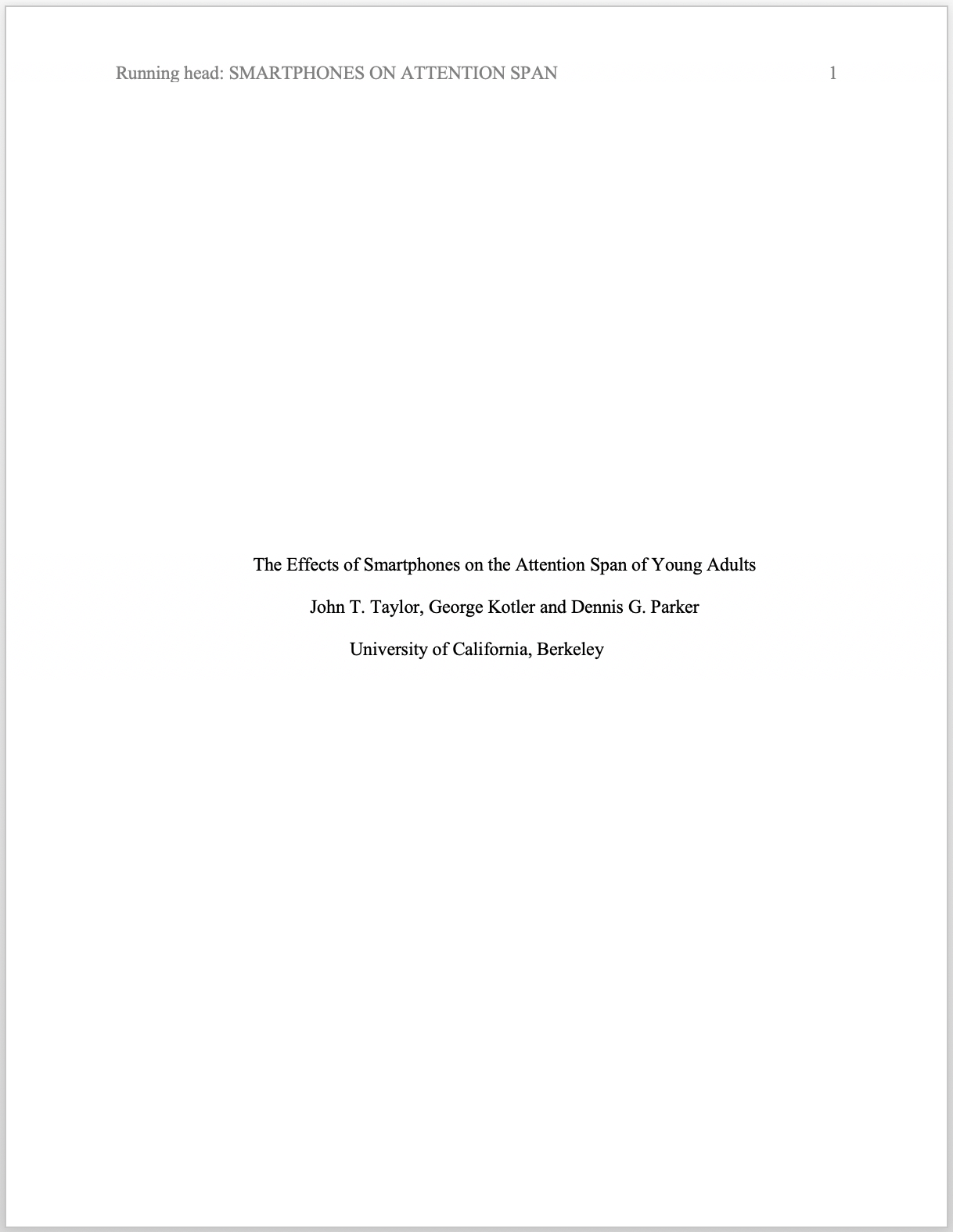
Prevent plagiarism. Run a free check.
An APA abstract is a one paragraph (± 250 words) summary of your paper. It introduces the objective or problem statement of the paper and includes information on the method, research results, and conclusions of your research. In a separate article we explain in-depth how to write an abstract .
Although most regular APA formatting guidelines apply, the abstract page also has specific requirements. The abstract starts with a centered heading “Abstract”. In contrast to regular APA headings, no styling is applied. The first line of the paragraph is, unlike regular paragraphs, not indented.
At the end of the abstract, keywords relevant to the research are included. These keywords improve the findability of your paper in databases. Indent the line with keywords and start with the italicized word “Keyword:”, followed by the keywords.
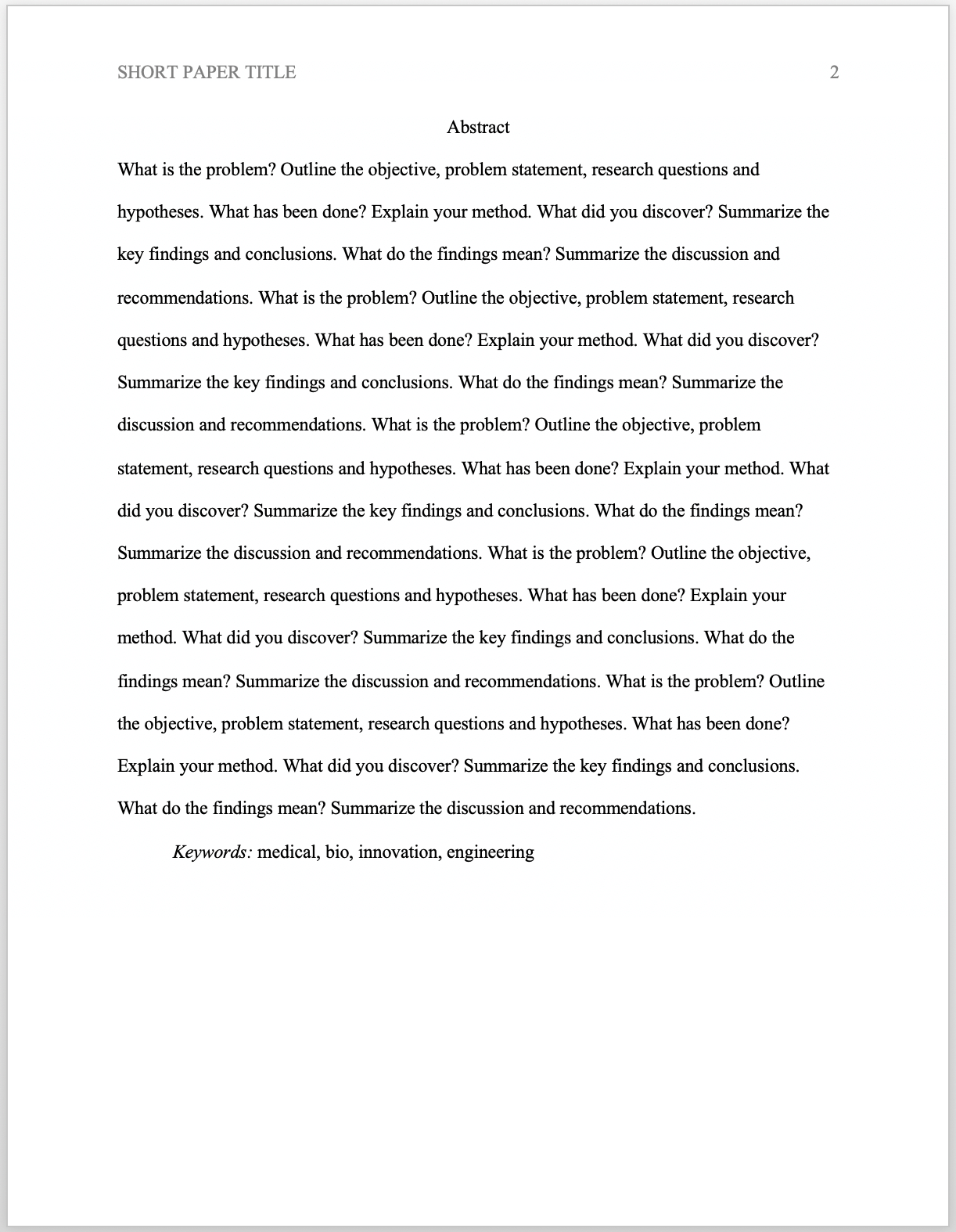
The APA reference page , also called reference list, is where all sources that are cited in the text are listed. The citations differs for each source type. Aside from the references itself the reference page as a whole also has specific APA formatting guidelines.
The APA reference page example below highlights those guidelines regarding page margins, hanging indent and the reference page title “References”. Furthermore, the reference list is sorted alphabetically . You can easily create APA references with Scribbr’s free APA Citation Generator .
APA reference page example
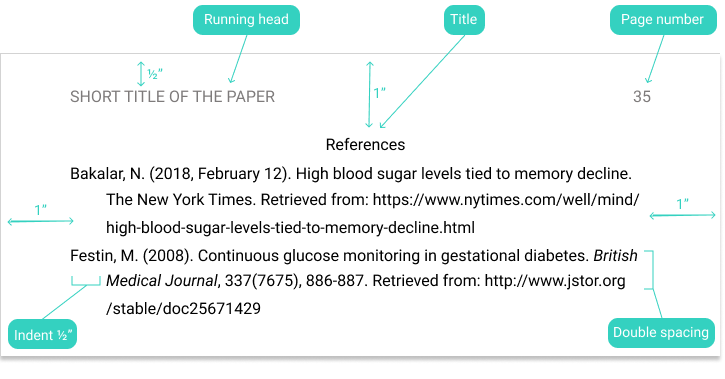
APA format citations consist of parenthetical citation in the text ( APA 6 in-text citations ) and the full reference in the reference list. For each webpage, journal article, book or any other source specific citation guidelines apply.
To make things easier Scribbr created the free APA Citation Generator that cites every source perfectly. Just enter the URL, journal DOI or book ISBN and both the in-text citation and full reference are generated.
In addition, Scribbr has in-depth APA citation examples for every source type ranging from journal articles and books to YouTube videos and tweets .
This video will demonstrate how to set up the APA format in Google Docs.
Cite this Scribbr article
If you want to cite this source, you can copy and paste the citation or click the “Cite this Scribbr article” button to automatically add the citation to our free Citation Generator.
Streefkerk, R. (2023, September 04). APA Format (6th ed.) for Academic Papers and Essays [Template]. Scribbr. Retrieved July 15, 2024, from https://www.scribbr.com/apa-style/6th-edition/archived-format/
Is this article helpful?
Raimo Streefkerk
Scribbr apa citation checker.
An innovative new tool that checks your APA citations with AI software. Say goodbye to inaccurate citations!

APA Outline
Ai generator.

If you’re a beginner in writing a research paper or an essay and your instructor asked you to use the APA format, you may not have the faintest idea what APA means, let alone use the format. If your instructor gives you the APA guidelines then good for you. If they haven’t, don’t panic. You’re going through the perfect article that will help you get acquainted and familiarize the APA format outline. You may also see essay outline .
Most college students or teachers who are majoring in social sciences, such as Psychology, Sociology, History, Linguistics, use the American Psychological Association or APA guidelines for writing research papers and assignments in this field of study. Other fields of study also use the APA format but not limited to Business, Economics, Nursing, and Criminology. The APA covers the initial title page to bibliography citation page. APA basically provides the basic layout style and outline to correctly write your paper in the APA format. Of course, other formats are also used by researchers, students, and teachers such as MLA, Harvard, etc. You may also see free outline .
Radio Outline Format Example
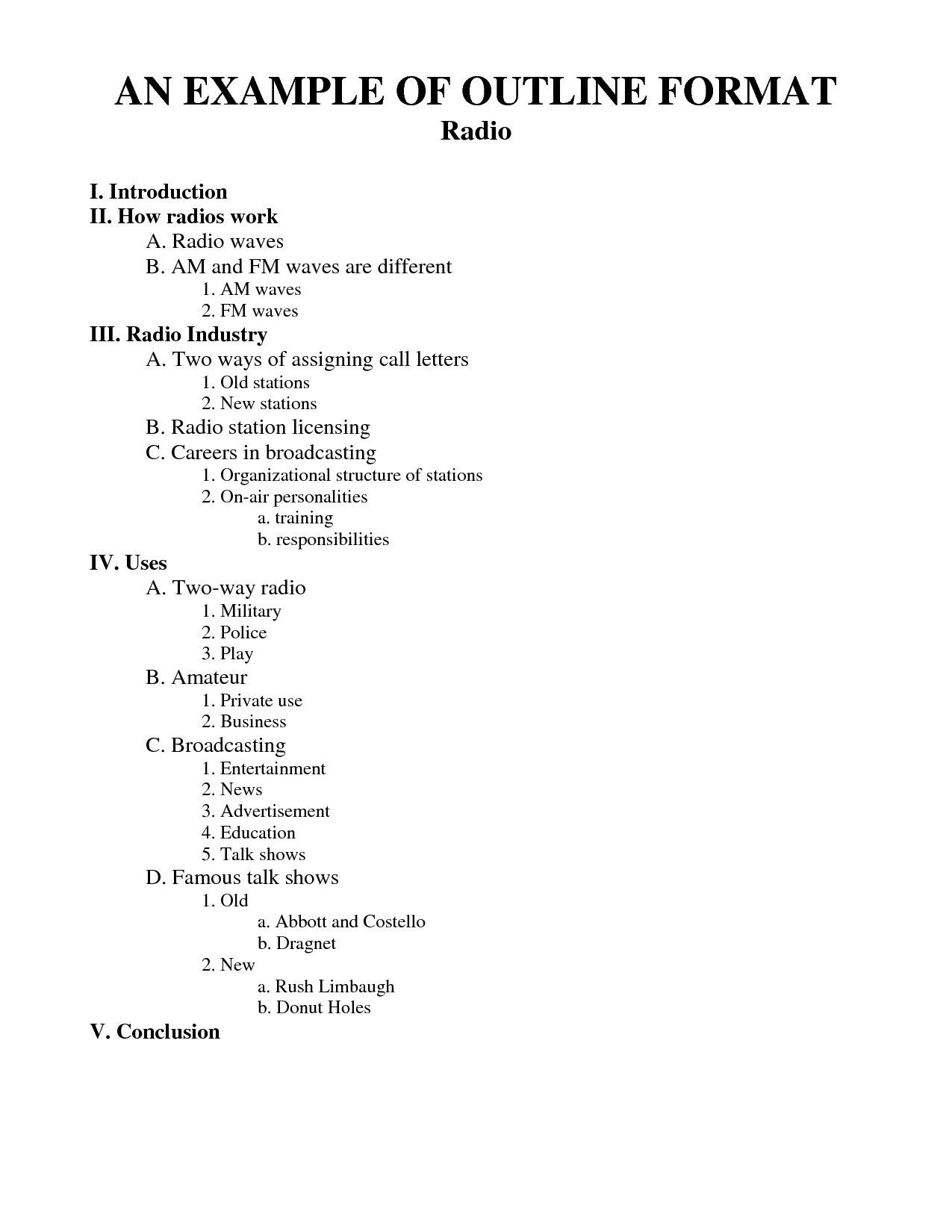
Size: 40 KB
APA Style Template Example
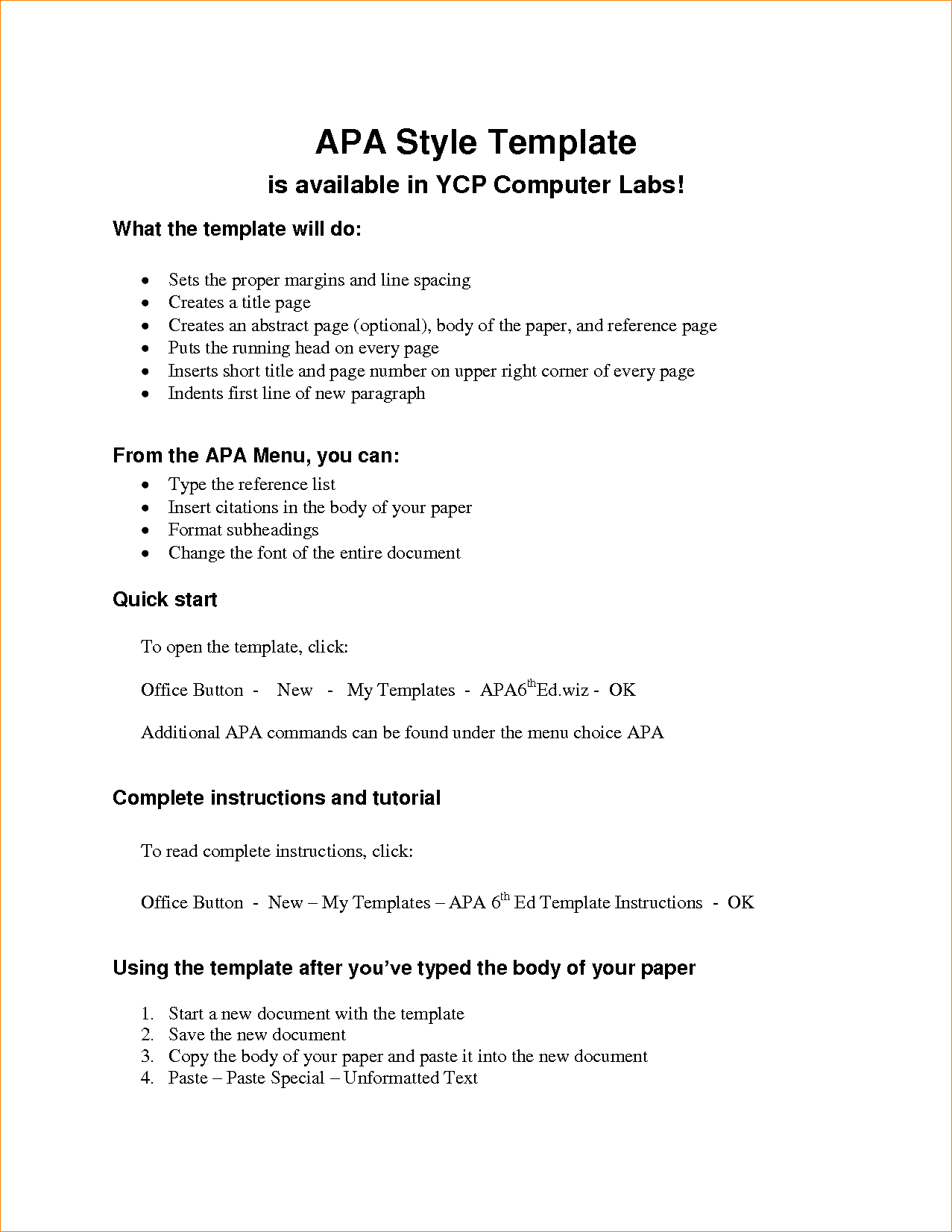
Size: 35 KB
APA Essay Outline Example
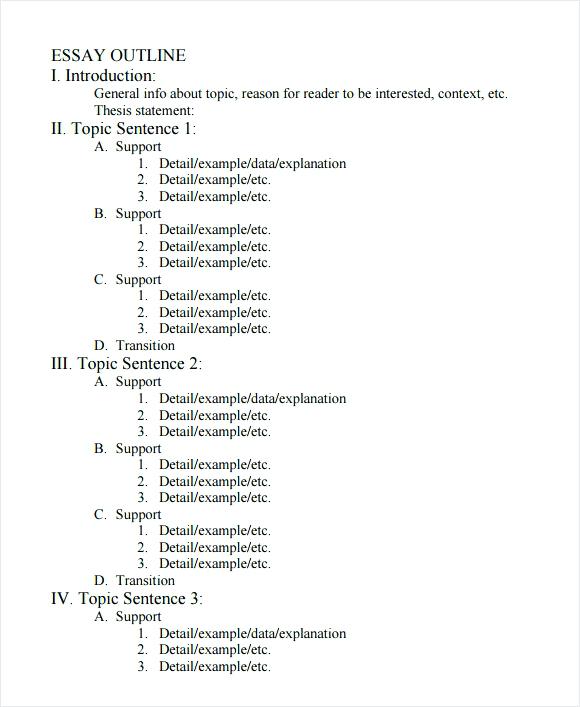
Size: 41 KB
The Importance of Public Control: Sample Outline
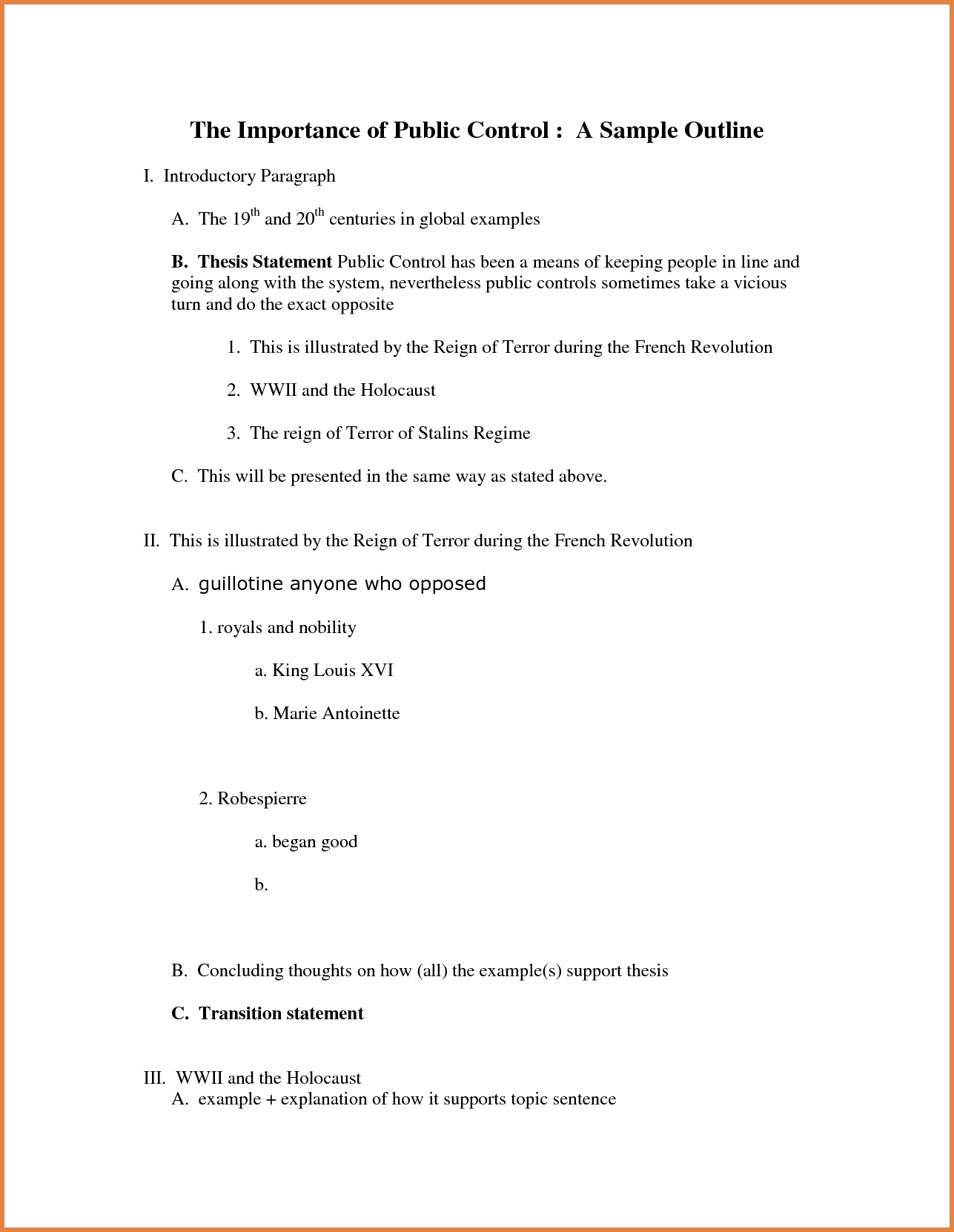
Size: 213 KB
I Wll Build My Church: Sample APA Outline
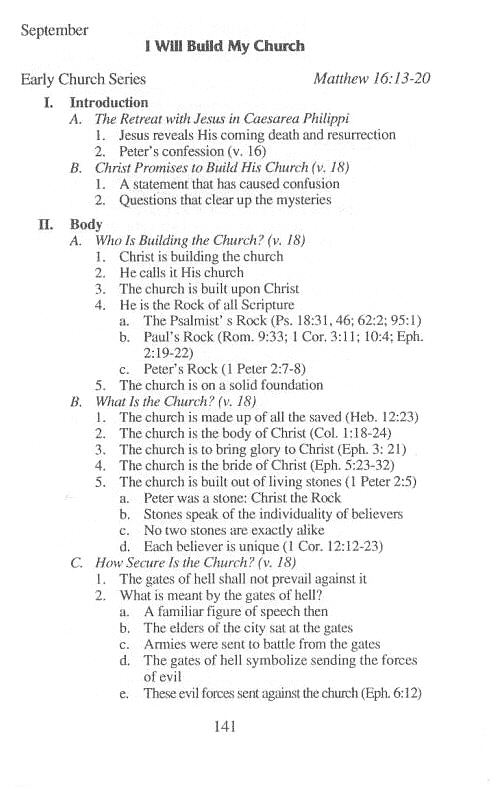
Size: 59 KB
The Purdue OWL: Sample APA Outline

Size: 63 KB
College Application Process Alphanumeric Outline

Size: 33 KB
Simple Alphanumeric Outline
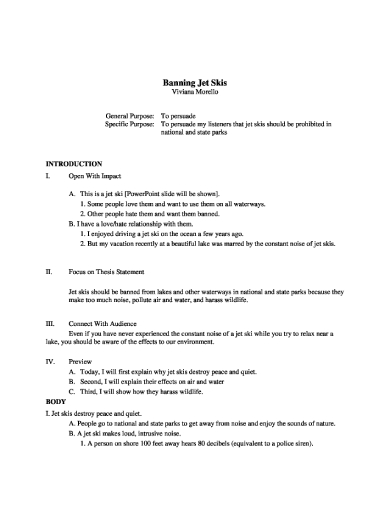
Size: 11 KB
2. Full-Sentence Outlines
Basic full-sentence outline.
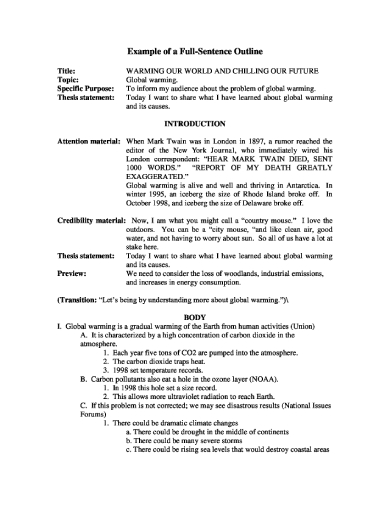
Though there are only a few differences between an alphanumeric outline and a full-sentence outline, you might still need a sample to illustrate these variations. See this simple full-sentence outline sample to learn more.
Full-Sentence Outline Example
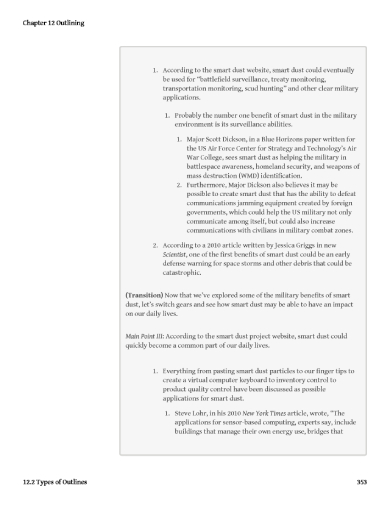
Size: 612 KB
3. Decimal Outlines
General decimal outline.
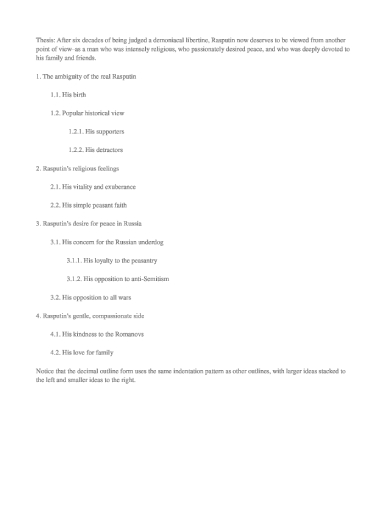
What is an APA Outline Format?
APA stands for American Psychological Association, and an APA outline format is a standardized format for outlining papers and other documents. An APA outline format is typically used for research papers, dissertations, and theses. It is a way to organize your ideas and thoughts in a clear and concise manner before writing your paper.
How to write an APA Outline Format
Using an APA format as your outline might be confusing at first but once you have familiarize yourself with the format, then it is easier for you to organize your topics and sub-topics you want to discuss in your essay or research paper. You may also see book outline .
Having a good outline has more chances of you presenting a well-written research paper or essay. Making an APA outline is the first thing to do in creating a structure on what will be written in the paper and how it is written. There is a grammatical format that you have to follow while writing your paper to make it sound credible. Having a sloppy grammar makes your paper less impressive. Here are some tips:
1. Observe the use of parallelism.
Parallelism means the use of consecutive verbal constructions in a sentence that corresponds to the grammatical structure. In this format, this refers to the structure between the headings and sub-headings. Once you’ve established your structure, it must be consistent with all your headings and subheadings. If you start your headings with a verb, then your subheadings should start with a verb. If you use a noun, then all your headings and sub-headings must use nouns. You may also see write a speech outline .
2. The use of coordination is vital between your headings.
All your headings must be equal in significance or importance of each other. The rule applies to sub-headings as well, but their information may be less significant than the headings. You may also see a speech outline .
3. Make use of subordination.
Subordination is the relationship between the headings and the sub-headings. The headings usually have general information while the information contained in the sub-headings are more specific, and so on to more sub-headings. The subordination is created using Arabic numerals. You may also see the program outline .
4. To organize your outline you should use division.
Each heading must have at least two or three divisions. However, if you have too many divisions, you need to use another heading or sub-heading. You may also see a biography outline .
5. Your headings should always use Roman Numerals (I, II, III, etc.) when you list them.
For example, if you are writing research for The Foundation of Mugs, your heading must look like this:
I. The Foundation of Mugs
Don’t forget to always use Roman Numerals while writing your main headings. Your heading is the first and basic step in formatting your APA outline. You may also see the chapter outline .
6. Next is the subheading.
The subheading follows the main heading. When listing them use a capital letter of the English alphabet. In the example above, your heading was “The Foundation of Mugs”. Suppose your subheading is “History of Mugs” then it should be listed using the English alphabet. Start with the capital letter A. You may also see the presentation outline .
7. Add more than one subheading to your main heading
If you like to add more than one subheading to your main heading, just by adding the next English alphabet in capital letters in the next subheading. Example: If you like to add a second subheading to your main heading, “Foundation of Mugs”, you may write this:
B. Designs and Functions of Mugs to the Society
Your heading and subheading will look like this:
I. Foundation of Mugs A. History of Mugs B. Designs and Functions of Mugs to the Society
Use Arab numerals (1,2,3 and so on). If you want to add another subheading “Decoration” under heading B, you may write it like this:
1. Decoration
Your outline would now look something like this:
I. Foundation of Mugs A.History of Mugs B. Designs and Functions of Mugs to the Society 1. Decoration
Finally, if there are still more subheadings you want to add under your last subheadings, use lowercase letters. If there are still subheadings you want to add under the last subheading, use Arab numerals in parenthesis. You may also see the course outline .
What is the purpose of an APA outline format?
The purpose of an APA outline format is to provide a clear and organized structure for your paper. It helps you to plan and organize your ideas before you start writing, and it ensures that your paper is logical and easy to follow.
What are the different types of outlines in APA format?
There are several different types of outlines in APA format, including the thesis outline, script outline, research paper outline, and book outline. Each outline type has its own specific requirements and guidelines.
What are the key elements of an APA outline format?
An APA outline format should include the title page, abstract, introduction, body, and conclusion. It should also have headings and subheadings to organize the information and provide structure to the document.
How do I create an APA outline format?
To create an APA outline format, start by identifying the main points you want to make in your paper. Then, organize those points into sections and subsections using headings and subheadings. Finally, add supporting details and evidence to each section to create a complete and well-organized outline.
In conclusion, an APA outline format is a helpful tool for organizing your ideas and thoughts before you start writing your paper. Whether you are working on a thesis outline, script outline, research paper outline, or book outline, using an APA outline format can help you to create a clear and organized document that is easy to read and follow. By following the guidelines and structure provided by APA outline format, you can ensure that your paper is well-organized, logical, and easy to understand.
Text prompt
- Instructive
- Professional
10 Examples of Public speaking
20 Examples of Gas lighting
Purdue Online Writing Lab Purdue OWL® College of Liberal Arts
Types of Outlines and Samples

Welcome to the Purdue OWL
This page is brought to you by the OWL at Purdue University. When printing this page, you must include the entire legal notice.
Copyright ©1995-2018 by The Writing Lab & The OWL at Purdue and Purdue University. All rights reserved. This material may not be published, reproduced, broadcast, rewritten, or redistributed without permission. Use of this site constitutes acceptance of our terms and conditions of fair use.
Alphanumeric Outlines
This is the most common type of outline and usually instantly recognizable to most people. The formatting follows these characters, in this order:
- Roman Numerals
- Capitalized Letters
- Arabic Numerals
- Lowercase Letters
If the outline needs to subdivide beyond these divisions, use Arabic numerals inside parentheses and then lowercase letters inside parentheses. Select the "Sample Outlines" PDF in the Media Box above to download the sample of this outline.
The sample PDF in the Media Box above is an example of an outline that a student might create before writing an essay. In order to organize her thoughts and make sure that she has not forgotten any key points that she wants to address, she creates the outline as a framework for her essay.
What is the assignment?
Your instructor asks the class to write an expository (explanatory) essay on the typical steps a high school student would follow in order to apply to college.
What is the purpose of this essay?
To explain the process for applying to college
Who is the intended audience for this essay?
High school students intending to apply to college and their parents
What is the essay's thesis statement?
When applying to college, a student follows a certain process which includes choosing the right schools and preparing the application materials.
Full Sentence Outlines
The full sentence outline format is essentially the same as the Alphanumeric outline. The main difference (as the title suggests) is that full sentences are required at each level of the outline. This outline is most often used when preparing a traditional essay. Select the "Sample Outlines" PDF in the Media Box above to download the sample of this outline.
Decimal Outlines
The decimal outline is similar in format to the alphanumeric outline. The added benefit is a system of decimal notation that clearly shows how every level of the outline relates to the larger whole. Select the "Sample Outlines" PDF in the Media Box above to download the sample of this outline.

IMAGES
VIDEO
COMMENTS
How to Create a Research Paper Outline Using APA . Understanding APA format basics can make writing psychology research papers much easier. While APA format does not provide specific rules for creating an outline, you can still develop a strong roadmap for your paper using general APA style guidance, your instructor's requirements, and your own personal organizational preferences.
Indent the first line of every paragraph of text 0.5 in. using the tab key or the paragraph-formatting function of your word-processing program. Page numbers: Put a page number in the top right corner of every page, including the title page or cover page, which is page 1. Student papers do not require a running head on any page.
Throughout your paper, you need to apply the following APA format guidelines: Set page margins to 1 inch on all sides. Double-space all text, including headings. Indent the first line of every paragraph 0.5 inches. Use an accessible font (e.g., Times New Roman 12pt., Arial 11pt., or Georgia 11pt.).
These sample papers demonstrate APA Style formatting standards for different student paper types. Students may write the same types of papers as professional authors (e.g., quantitative studies, literature reviews) or other types of papers for course assignments (e.g., reaction or response papers, discussion posts), dissertations, and theses.
On the other hand, a research APA-style paper outline is a proper structure to follow. Purpose of research paper outline. An outline is a formalized essay in which you give your own argument to support your point of view. And when you write your apa outline template, you expand on what you already know about the topic. Academic writing papers ...
Basic guidelines for formatting the reference list at the end of a standard APA research paper. Author/Authors. Rules for handling works by a single author or multiple authors that apply to all APA-style references in your reference list, regardless of the type of work (book, article, electronic resource, etc.)
Media Files: APA Sample Student Paper , APA Sample Professional Paper This resource is enhanced by Acrobat PDF files. Download the free Acrobat Reader. Note: The APA Publication Manual, 7 th Edition specifies different formatting conventions for student and professional papers (i.e., papers written for credit in a course and papers intended for scholarly publication).
American Psychological Association (APA) Documentation Style, 7th Edition. This handout begins with general guidelines about the parts of a paper you need to document and then presents a brief overview of the APA documentation system as described in the 7thedition of the Publication Manual of the American Psychological Association (2019).
To format a paper in APA Style, writers can typically use the default settings and automatic formatting tools of their word-processing program or make only minor adjustments. The guidelines for paper format apply to both student assignments and manuscripts being submitted for publication to a journal. If you are using APA Style to create ...
The start of the semester is the perfect time to learn how to create and format APA Style student papers. This article walks through the formatting steps needed to create an APA Style student paper, starting with a basic setup that applies to the entire paper (margins, font, line spacing, paragraph alignment and indentation, and page headers).
An outline is a drafting tool to help you plan your paper. An outline provides structure for the sections and/or paragraphs of your paper, depending on the scope of your project. Please note that APA style does not require any specific formatting for outlines because APA style is intended for published texts and academic essays. An outline ...
If the essay is in a chapter of a book, edited collection, or anthology, APA format states that you should cite the last name, first name, title of essay, title of collection, publisher, year, and page range. For example: Smith, John, "The Light House," A Book of Poems, editing by Peter Roberts, Allworth Press, 2005, pp. 20-25.
APA Style 7th ed. Tutorials; Additional APA 7th Resources; Grammarly - your writing assistant; ... fill out the title page and get writing! Sample Paper APA 7th ed. Our APA sample paper shows you how to format the main parts of a basic research paper. APA 7th Sample Papers from Purdue Owl << Previous: Block Quotations; Next: Government ...
Creating an outline can be a great way for you to organize your thoughts and paper structure prior to working on your first draft. While APA style rules do not specify how to properly format an outline, there are some helpful practices you should adhere to when creating one. This article will help you create an outline that you can use to write your next APA format paper.
Writing an APA outline shouldn't be difficult. Learn how to format your ideal outline with these different examples, and make sure you have a strong backbone for your paper. ... Again, just start at the first Roman numeral for an APA-compliant full-sentence essay outline. ... Be sure to stick with the style guide your instructor prefers ...
The authority on APA Style and the 7th edition of the APA Publication Manual. Find tutorials, the APA Style Blog, how to format papers in APA Style, and other resources to help you improve your writing, master APA Style, and learn the conventions of scholarly publishing.
APA 7th Edition Template. Download this 7th-edition template, and use it to format your APA-style Research Paper. Simply download and save a new copy of the document and paste the contents of your paper into the appropriate fields within the template. This version of the template includes the ABSTRACT page.
To format an outline in APA style, you should use Roman numerals for the main headings, capital letters for subheadings, and Arabic numerals for sub-subheadings, if necessary. Additionally, each level of the outline should be indented to show the hierarchy of the information.
APA Style uses five (5) levels of headings to help you organize your paper and allow your audience to identify its key points easily. Levels of headings establish the hierarchy of your sections just like you did in your paper outline. APA tells us to use "only the number of headings necessary to differentiate distinct section in your paper."
An essay outline is a way of planning the structure of your essay before you start writing. It involves writing quick summary sentences or phrases for every point you will cover in each paragraph, giving you a picture of how your argument will unfold. You'll sometimes be asked to submit an essay outline as a separate assignment before you ...
Generate accurate APA citations with Scribbr. The most important APA format guidelines in the 6th edition are: Use 12 pt Times New Roman. Set 1 inch page margins. Apply double line spacing. Insert a running head on every page. Indent every new paragraph ½ inch.
Making an APA outline is the first thing to do in creating a structure on what will be written in the paper and how it is written. There is a grammatical format that you have to follow while writing your paper to make it sound credible. Having a sloppy grammar makes your paper less impressive. Here are some tips: 1. Observe the use of parallelism.
Alphanumeric Outlines. This is the most common type of outline and usually instantly recognizable to most people. The formatting follows these characters, in this order: Roman Numerals. Capitalized Letters. Arabic Numerals. Lowercase Letters. If the outline needs to subdivide beyond these divisions, use Arabic numerals inside parentheses and ...